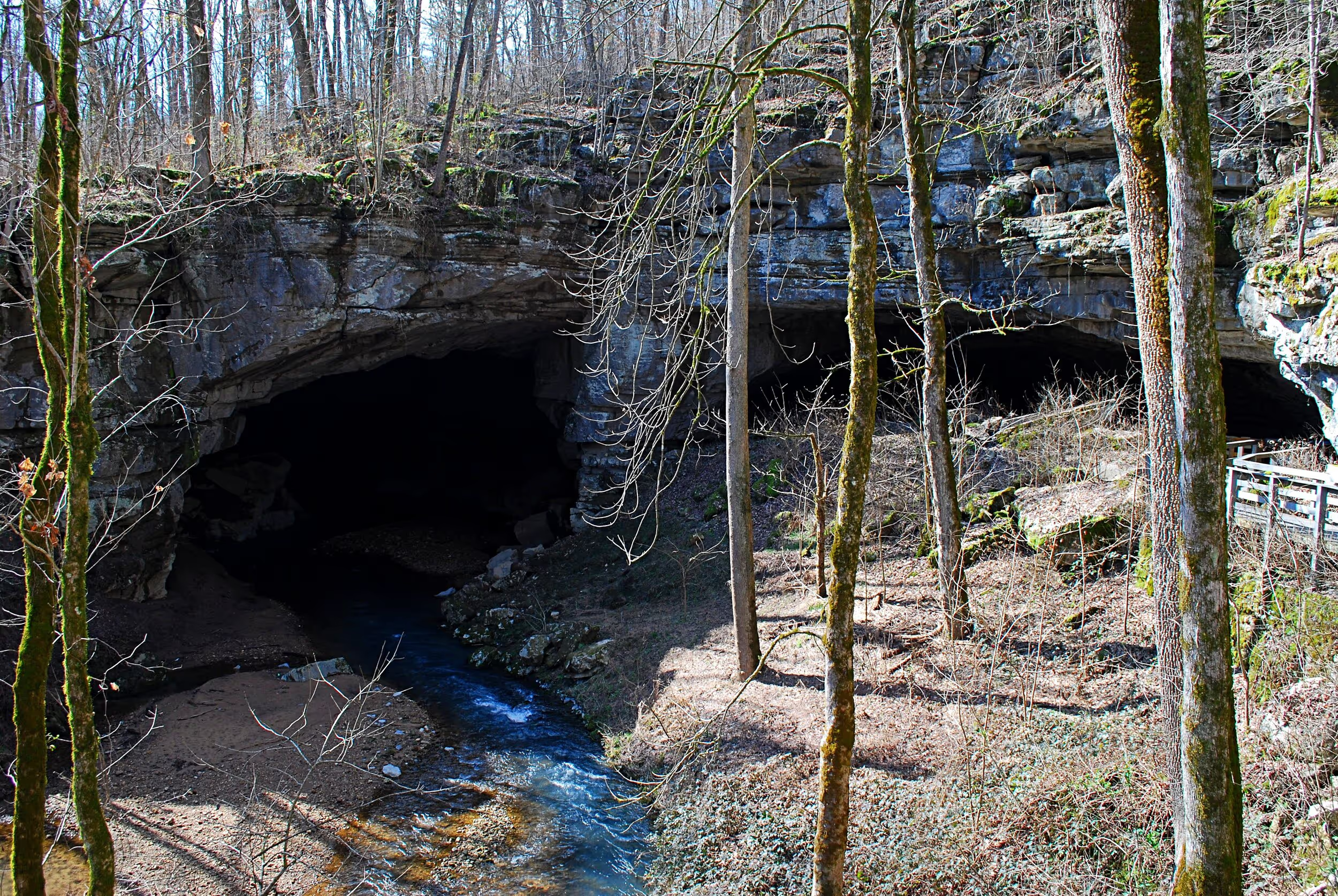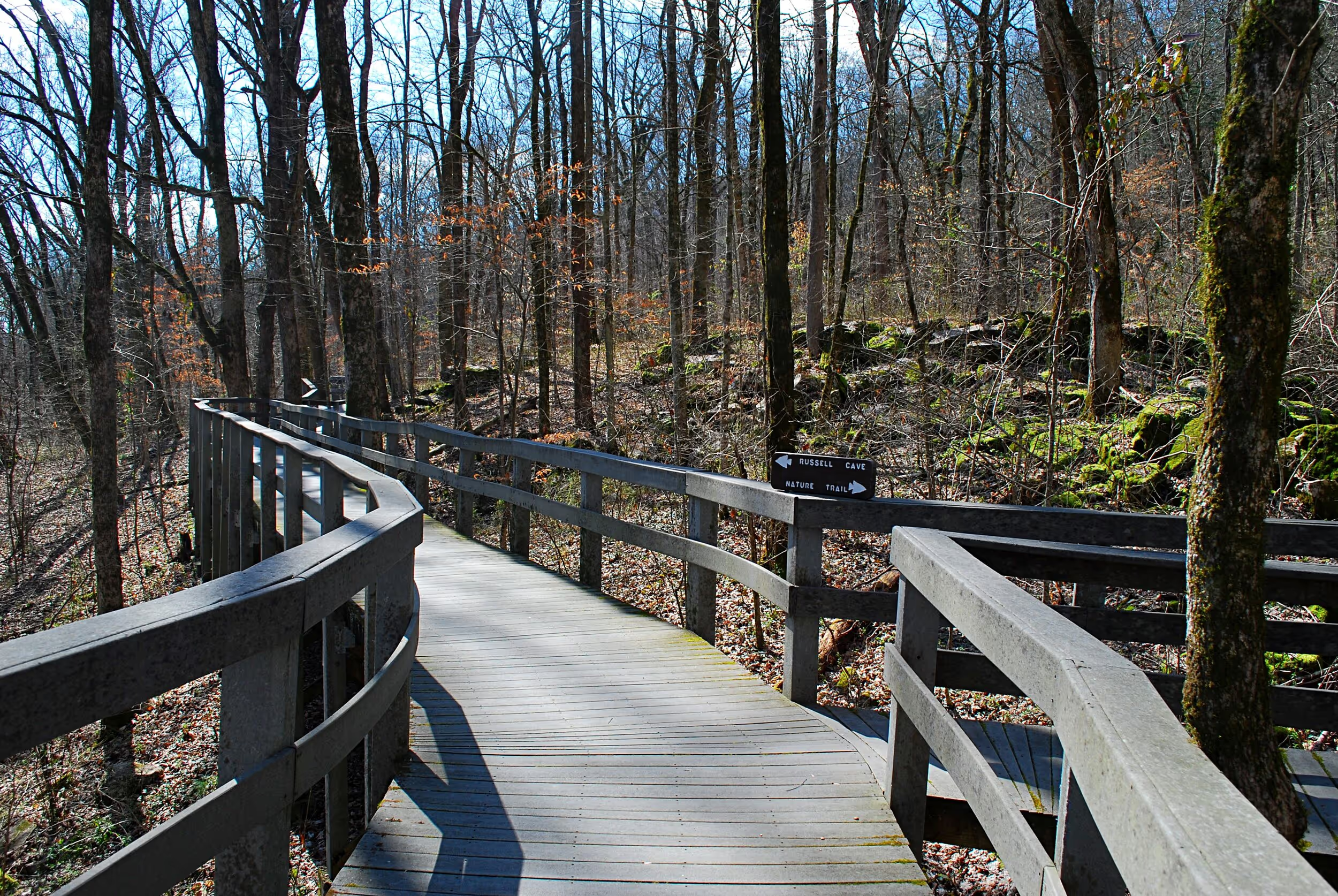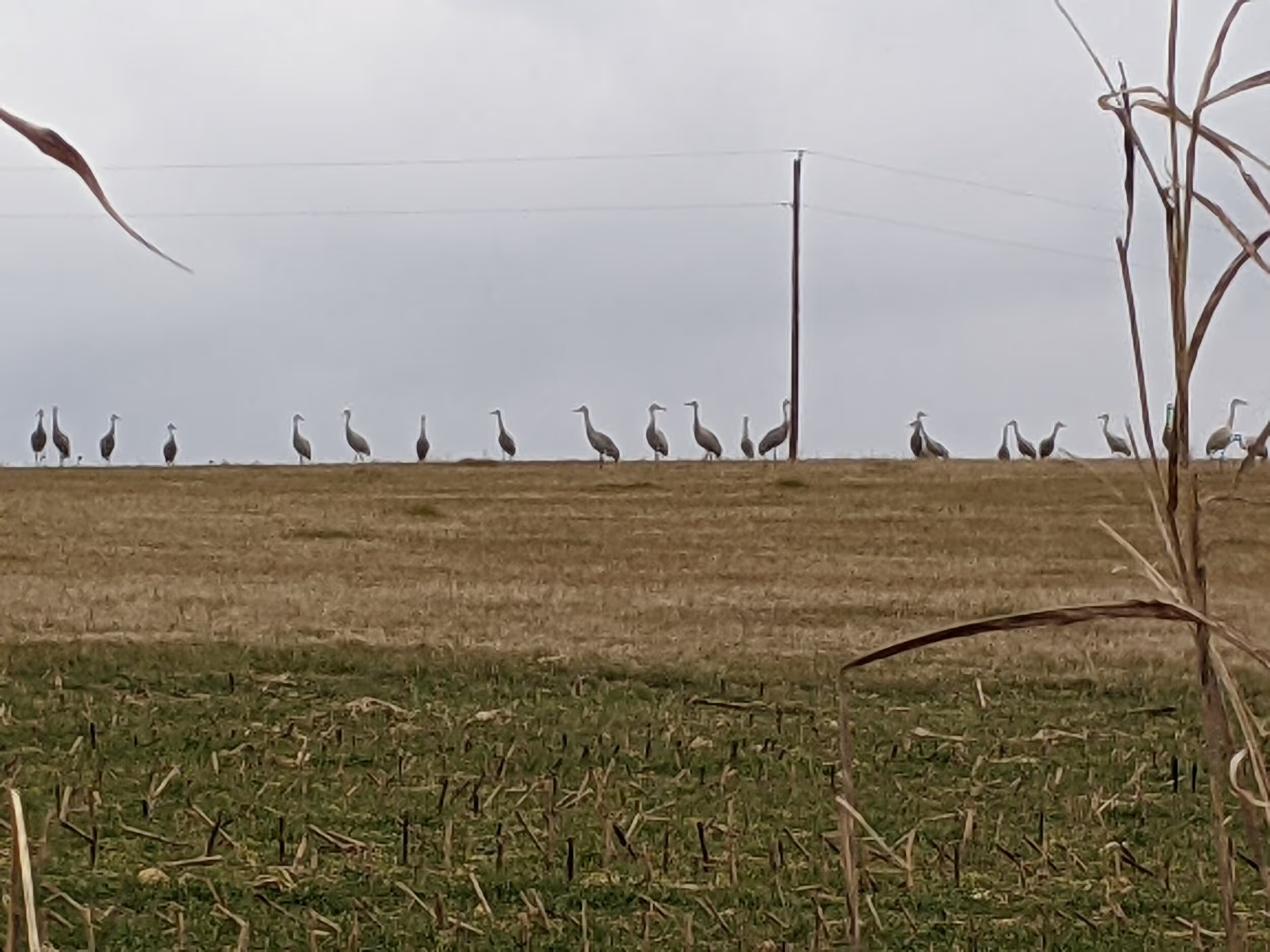Adventure Guides
Experience Ancient Wonders at Secluded Russell Cave National Monument


One of the quieter, lesser-known units of the National Park System, Russell Cave National Monument lies less than an hour’s drive from Chattanooga, at the foot of Montague Mountain, part of the Cumberland Plateau, just west of Bridgeport, Alabama.
Russell Cave, carved by underground erosion through a layer of limestone, is considered the oldest rock shelter regularly inhabited in the eastern U.S., and has provided evidence of human use over thousands of years, beginning with Paleolithic spear points used for hunting mastodons, sloths, and bison. Stone tools have been found, which were used in farming during the more recent Mississippian period of 1,000 years ago. It is thought that during that era, the cave sheltered 15 to 30 residents at a time, who may have primarily lived in the cave during the winter and moved to villages along the Tennessee River in the summer.
In addition to spear points and stone tools, archaeological evidence recovered at the site includes charcoal from fires, animal bones, pottery sherds, and human remains. In all, approximately two tons of artifacts have been recovered.
The cave was named for Col. Thomas Russell, a veteran of the American Revolution who owned the property when maps were first drawn of the area in the 1800s. Following the first archaeological excavations at the site in 1953, the National Geographic Society purchased a 310-acre tract there in 1956, which was then designated a national monument by President John F. Kennedy in 1961. Russell Cave was listed on the National Register of Historic Places in 1966.
The Cave
Not far from the entrance, a large spring feeds a usually dry creek, which then flows into the left side of the cave. After 1.5 miles, it empties into Widow’s Creek, a tributary of the Tennessee River.
Overall, the cave has 7.2 miles of passageways and five other entrances, and is the third-longest mapped cave in Alabama. Recreational caving is no longer allowed.
Alabama’s Jackson County, in which Russell Cave is located, is home to over 1,500 explored caves and thus is considered to have more caves per square mile than anywhere else in America.
Shortly before Russell Cave was first occupied by humans, a large stream covered the entire cave floor. A rockfall from the ceiling diverted the stream to the cave’s left side, providing a living space. Today, the right side of the cave is at a higher level and is basically a large room, measuring approximately 210 feet deep, 107 feet wide, and 26 feet high. After archaeological excavation in the 1960s, 15-foot bolts were installed to prevent further ceiling collapses.
A 0.14-mile elevated boardwalk leads from the visitor center to the cave entrance, where interpretive signs depict life as it was in the cave.

A Nature Preserve
But Russell Cave National Monument isn’t just about caves and archaeology. It’s also site No. 44 on the North Alabama Birding Trail, and features a diverse habitat of woodlands, fields, and caves. Summer and scarlet tanagers, the yellow-billed cuckoo, pileated woodpeckers, red-tailed hawks, and wild turkeys are among the 130 species of birds identified there. Most eastern species of warblers and vireos can be seen during migration seasons.
Wildlife seen in addition to birds includes: foxes, bobcats, coyotes, white-tailed deer, armadillo, raccoons, and fox squirrels (a larger species than the gray squirrel and one rarely seen in this part of the country), as well as a variety of snakes. An otter has been seen in the stream that runs into the cave, which also contains several species of fish. The cave itself is inhabited by a species of scorpion found in only one other known location, as well as brown bats and northern long-eared bats. Bones have been found which indicate that porcupines and peccary once existed here.
A wide variety of plant life flourishes in the park. A grove of longleaf pines, the state tree of Alabama, easily identified by their large cones, grows near the visitor center. Though they were once very common in the coastal plains of the Southeast, it is estimated only 3 percent of original longleaf pine forests remain. In addition, a 2-acre native wildflower meadow is maintained, with spring being a good time to see wildflowers in bloom.
Facilities and Programs
The friendly staff at the visitors center will answer questions and show a film of the story of Russell Cave on request. Ranger-guided walks to the cave, as well as demonstrations of prehistoric tools and weapons, are offered upon request and depending on staff availability. You may have an opportunity to try your hand with a blowgun or the atlatl. The visitors center contains a small museum with examples of artifacts and a diorama of life in the cave, as well as a small gift shop with books and other items. The visitors center, dedicated in 1967, is named after Gilbert H. Grosvenor, who served as both magazine editor and president of the National Geographic Society.

Small archaeology pits are seeded with fake artifacts for school groups to have archaeology for beginners classes. When students find something in an excavation they take it into a nearby house, which is now a classroom and lab, to clean and identify, just as would be done with a real dig.
In addition to the boardwalk to the cave, there is a unique paved loop, called the Nature Trail, on the side of Montague Mountain. The trail is an approximately 1.2-mile hike. Though short, the 500-foot climb makes it a bit strenuous. It can also be slippery when wet. The unpaved 0.2-mile Cutoff Trail joins the two sides of the loop and provides a shorter and less strenuous option. The park brochure, available at the visitors center, includes a trail map.
There are picnic tables near the visitors center.
A number of improvements to the park are anticipated in the next few years. These include plans for the visitor center to be remodeled to make room for a larger exhibit space, followed by new exhibits and a new park film.
Russell Cave National Monument, including the visitors center, is open daily from 8 a.m. to 4:30 p.m. (CT), except for New Year’s, Thanksgiving, and Christmas. The Nature Trail is closed at 3:30 p.m. in order to allow hikers time to be out by 4:30.
For directions and more information, visit the park’s website.
More Like This

Tired of Sitting in Traffic on Chattanooga Interstates?

Scenic Alternate Routes Available to Commuters


